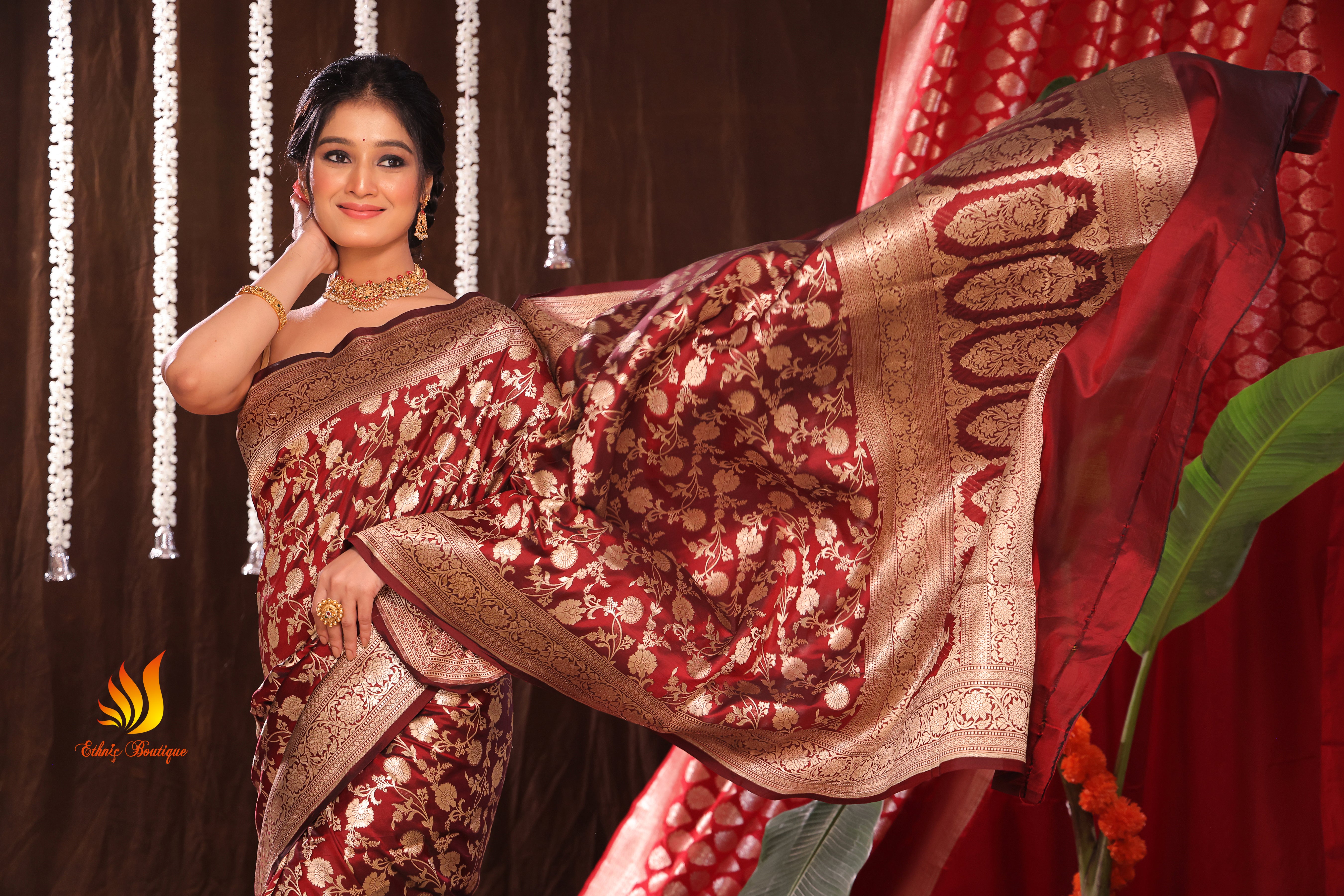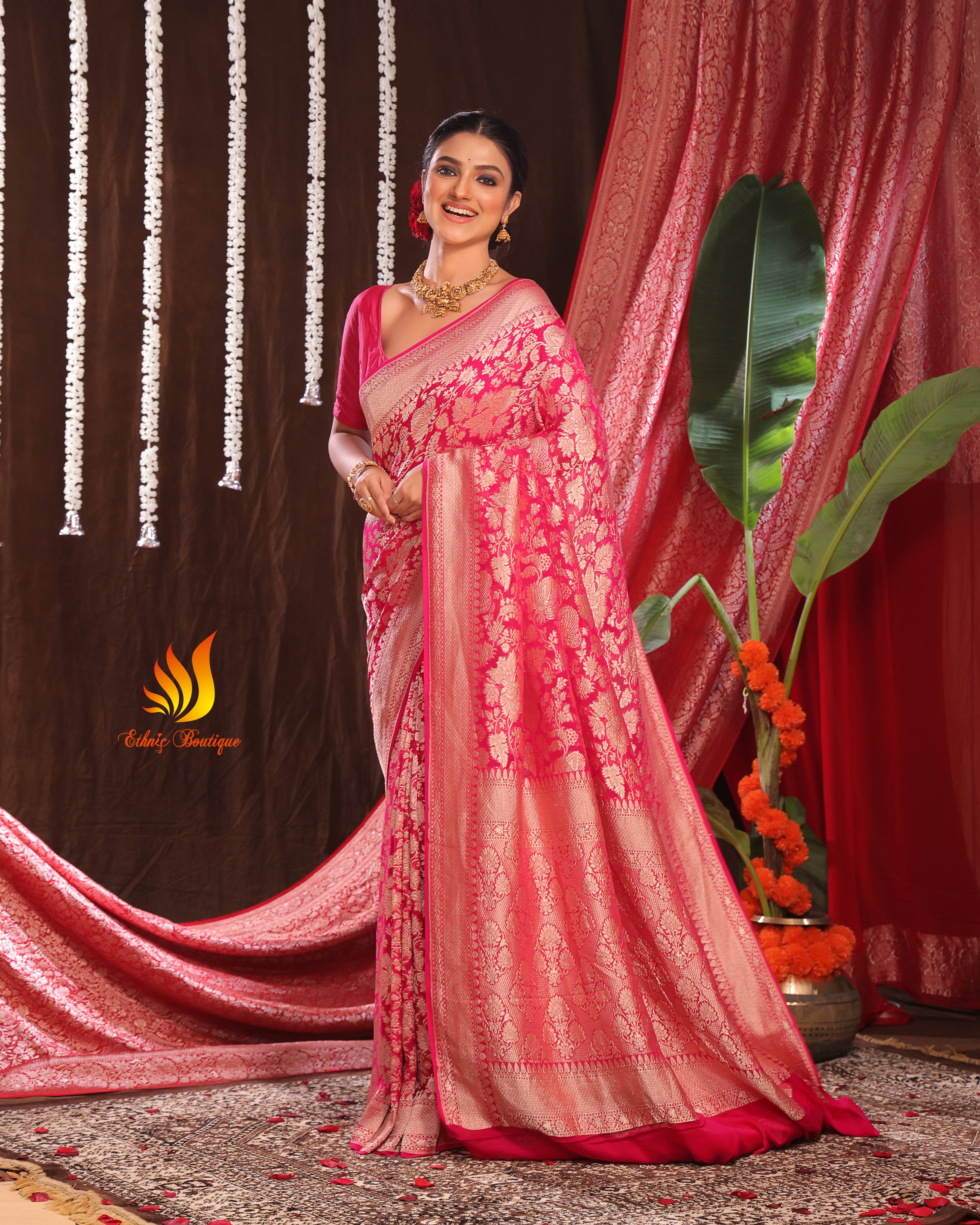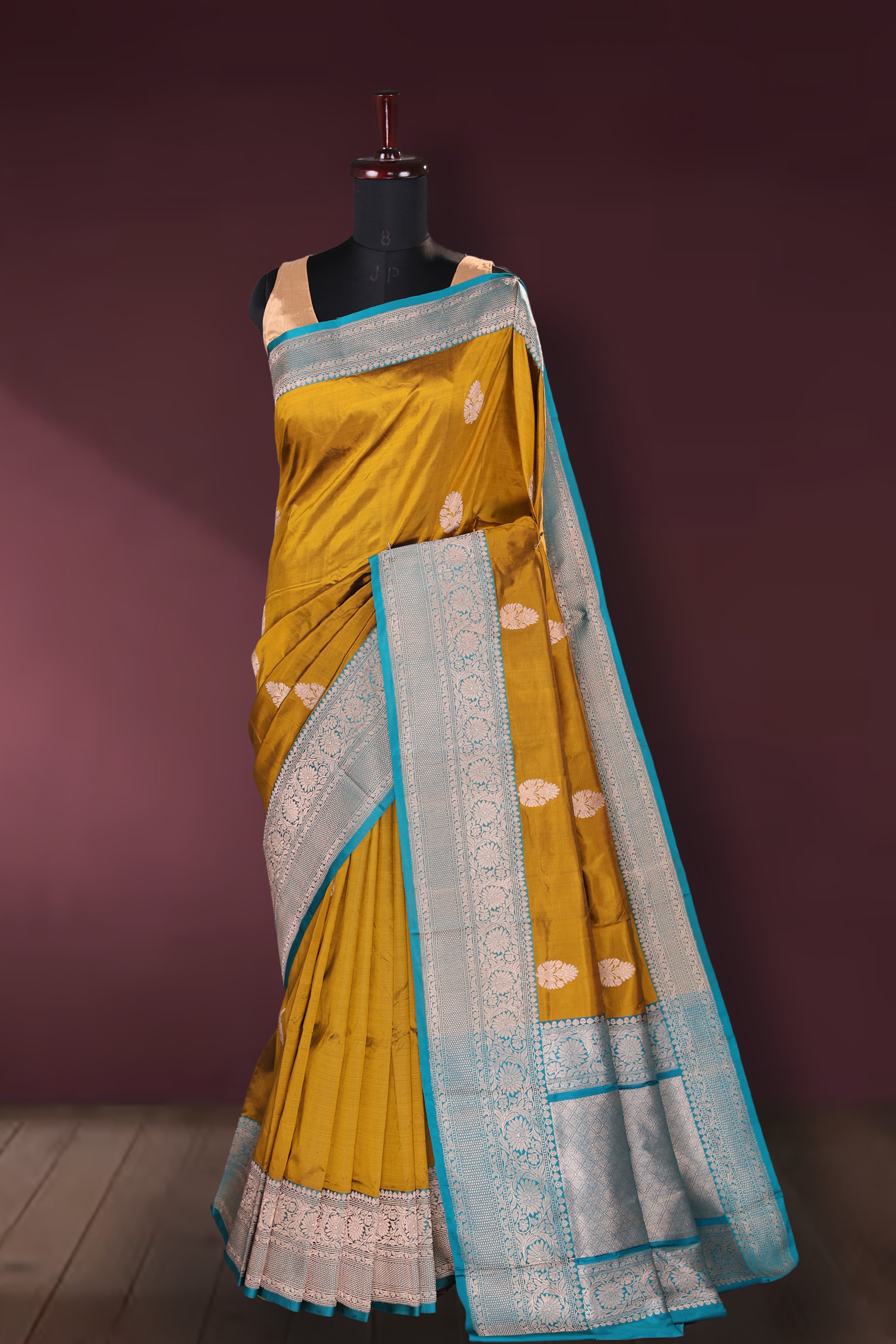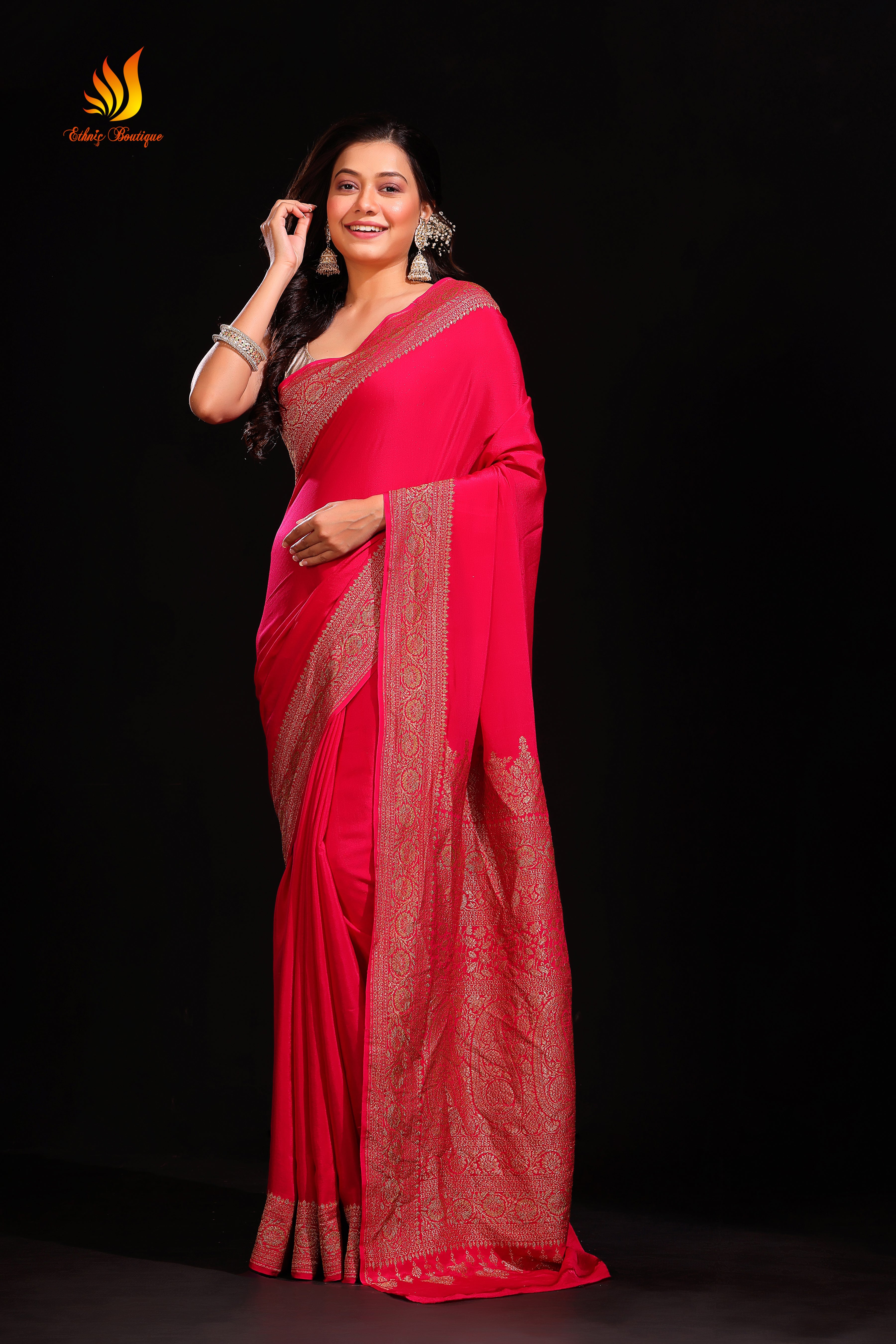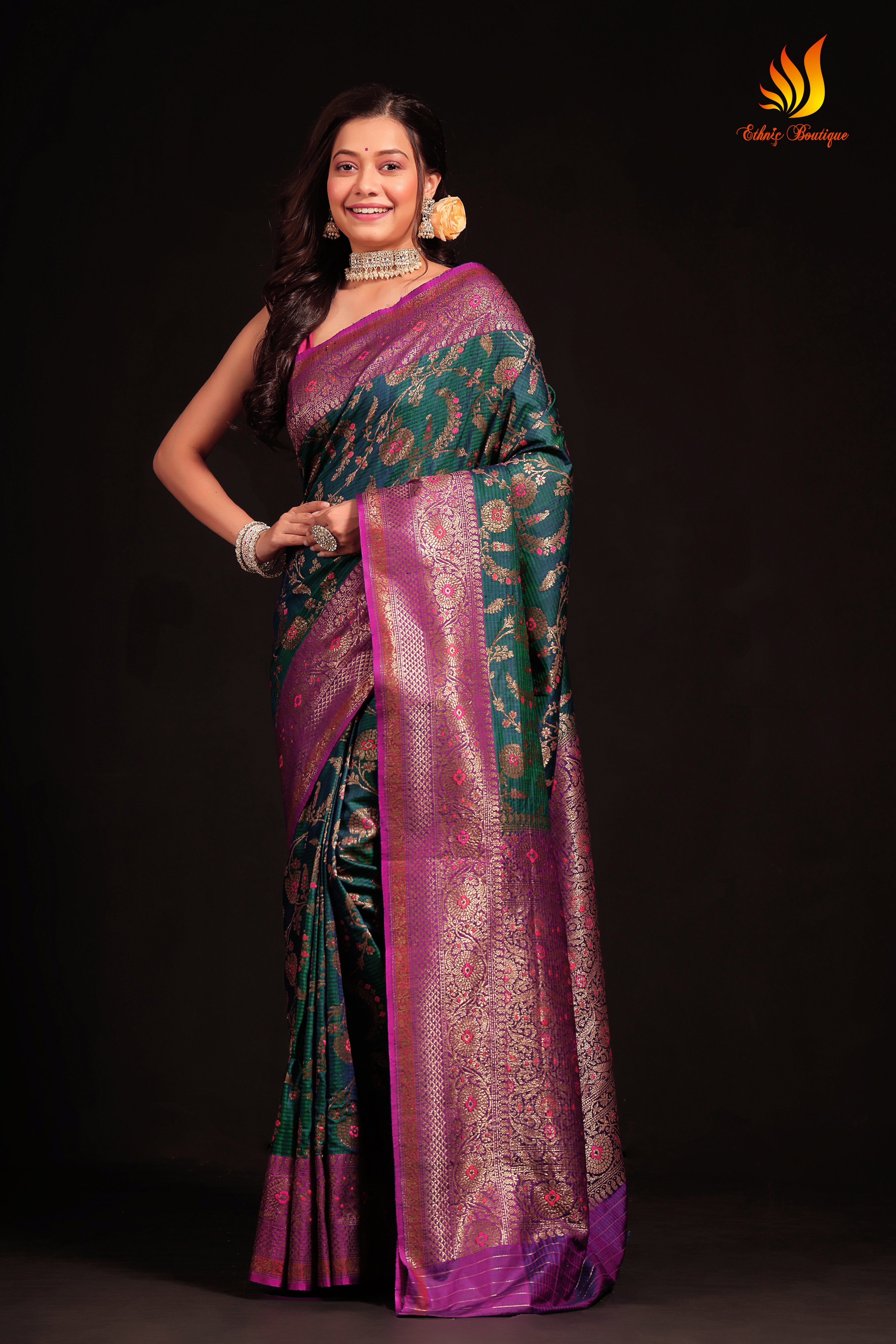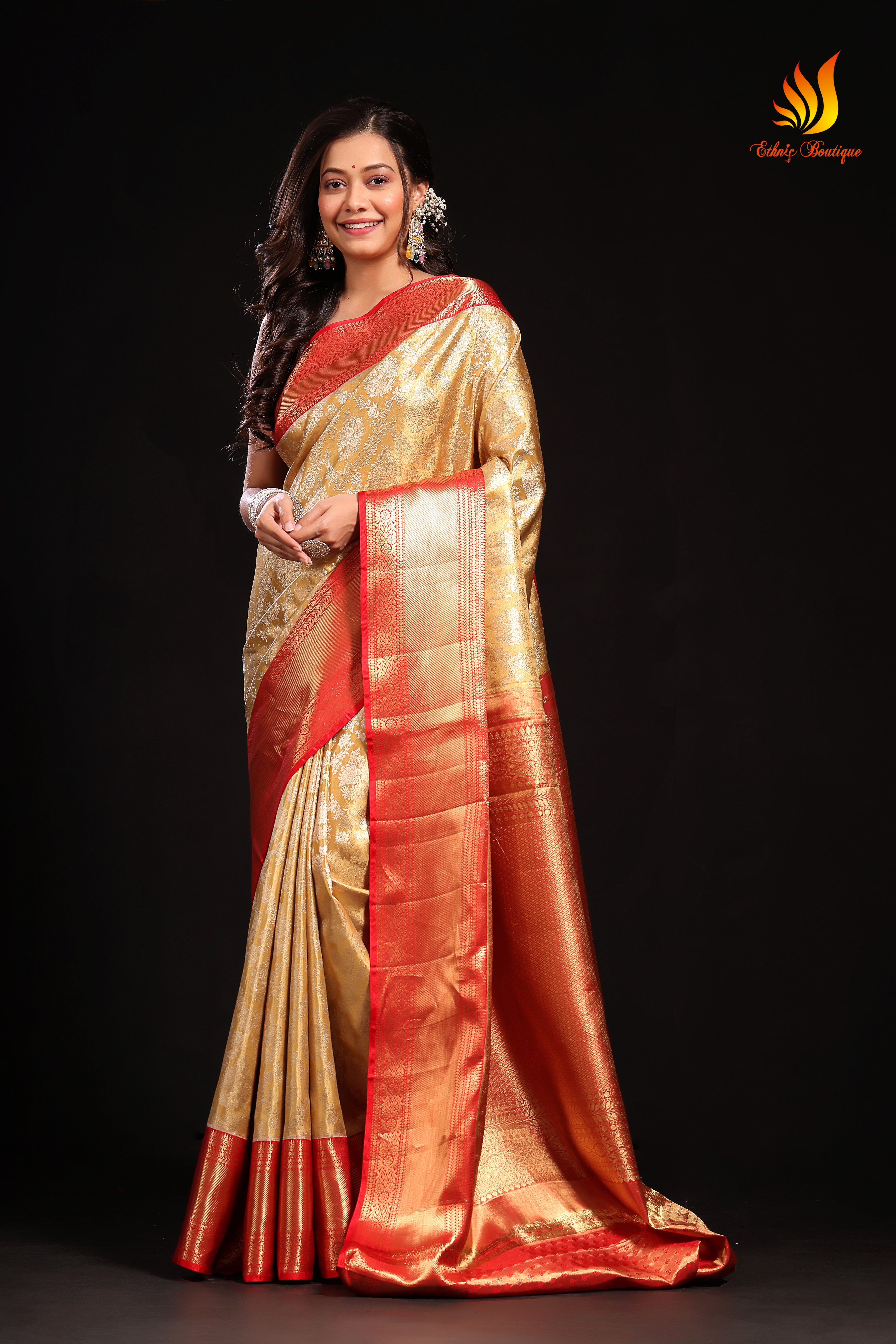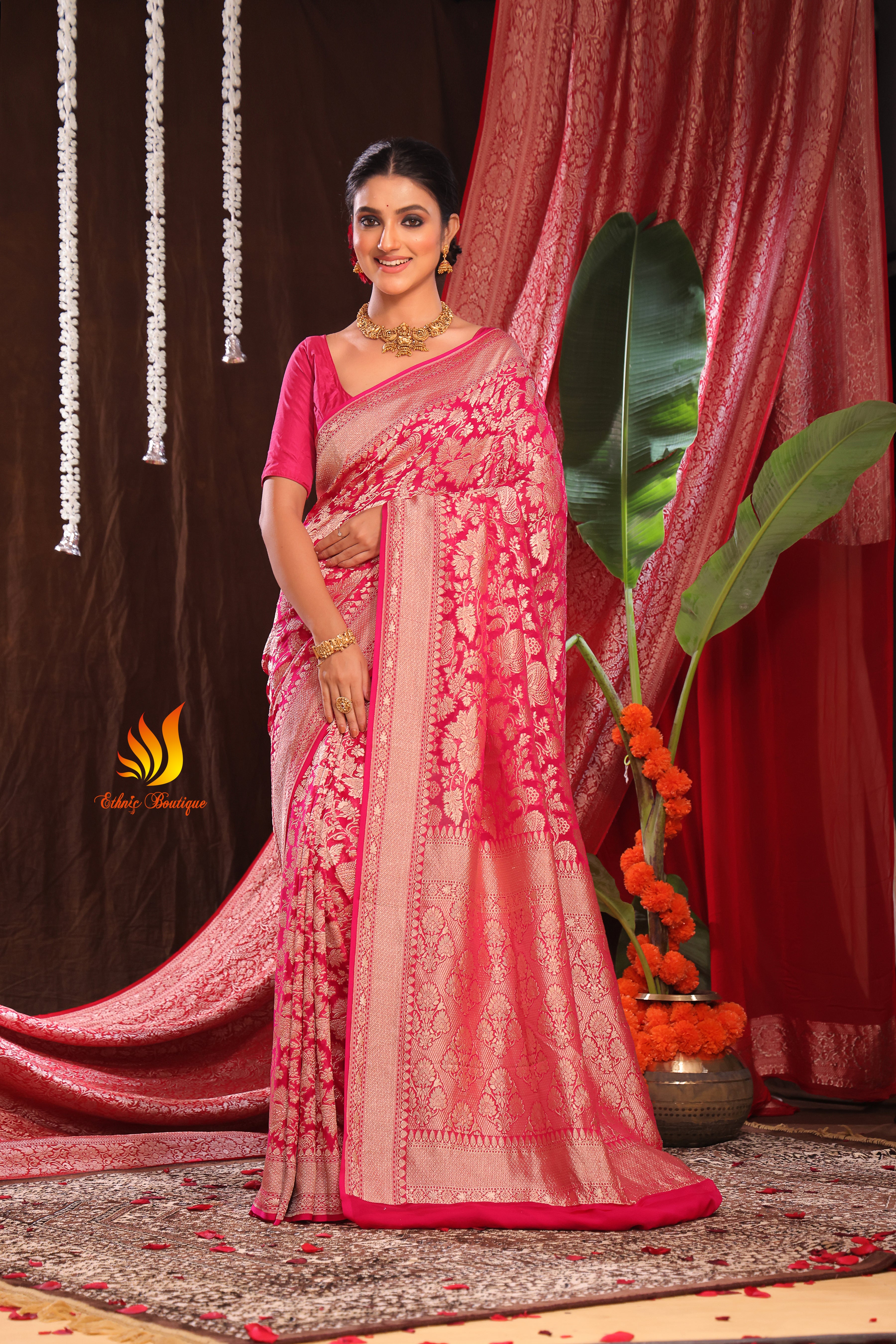A "Vidarbha Tussar Saree" is a distinctive handloom saree originating from the Vidarbha region of Maharashtra, India. It's renowned for its use of Tussar silk and its characteristic "Karvati Kinar" (saw-tooth border) design. This saree holds a Geographical Indication (GI) tag since 2017, signifying its unique origin and traditional craftsmanship.
Here's a detailed explanation:
What is Tussar Silk?
Before delving into the Vidarbha Tussar Saree, it's important to understand Tussar silk itself.
-
Wild Silk: Tussar silk, often called "wild silk" or "Kosa silk," is produced by silkworms of the Antheraea genus, which are reared in wild forests, primarily feeding on the leaves of trees like Arjun, Sal, and Terminalia. This distinguishes it from mulberry silk, which comes from domesticated silkworms.
-
Natural Luster and Texture: Tussar silk is known for its natural golden-brown hue (though it can be dyed in various colors) and its rich, slightly coarse, and uneven texture. It has a dull, yet elegant, golden sheen.
-
Durability and Comfort: While generally considered less durable than mulberry silk due to shorter fibers, it is still strong and porous, making it comfortable to wear, especially in warmer climates.
Characteristics of a Vidarbha Tussar Saree:
-
Karvati Kinar (Saw-tooth Border): This is the most distinguishing feature. "Karvat" in Marathi means "saw," and "Kinar" means "border" or "edge." The borders of these sarees are woven with distinctive saw-tooth-like temple motifs, varying in size. These designs are created using an extra warp and are often in contrasting colors like red, maroon, white, or green against the natural beige or cream body of the saree.
-
Material Composition:
-
Body: The main body of the saree is traditionally woven from handspun raw Tussar silk, giving it its characteristic natural color and textured feel with irregular nubs.
-
Border: The unique "Karvati" border is woven using mercerized cotton yarns, which provide a crisp contrast and allow for the intricate saw-tooth patterns.
-
Weaving Technique:
-
Three-Shuttle Weaving: Vidarbha Tussar Sarees are primarily woven using a complex three-shuttle weaving technique, which creates a tapestry-like effect on the fabric, especially in the borders. This technique requires high precision and skill.
-
Pit Looms with Nagpuri Dobby: The weaving is done on traditional pit looms, often with a Nagpuri wooden lattice dobby installed. This setup facilitates the creation of the intricate border patterns.
-
Labor-Intensive: The entire weaving process is labor-intensive, with each saree taking several weeks (typically 2-3 weeks) to complete, making each piece unique.
-
Natural Hues and Contrast: The sarees often feature the natural beige or cream color of Tussar silk for the body, beautifully complemented by vibrant, contrasting borders. While traditional colors are common, modern variations may include a wider range of dyed hues.
-
Heirloom Quality: Due to the intricate craftsmanship and the natural durability of Tussar silk, these sarees are considered heirloom pieces, often passed down through generations.
-
Cultural Significance: Historically, Karvati sarees were an integral part of matrimonial ceremonies in Vidarbha, worn by brides during wedding rituals. They represent the rich textile heritage and artistic legacy of the region.
Origin and History:
The weaving tradition of Vidarbha, especially in villages like Andhalgaon, Mohadi, and Palandur in District Bhandara, has ancient roots. These areas have a natural abundance of Tussar cocoons from the surrounding forests, which provided the raw material for weavers. The craft has been sustained by generations of artisans who have balanced inherited methods with evolving market demands. The awarding of the Geographical Indication (GI) status in 2017 has further recognized and protected this unique weaving tradition.
Price Range:
The price of Vidarbha Tussar sarees can vary significantly depending on the intricacy of the weave, the silk quality, and the weaver's reputation. Generally, you can expect prices to range from around ₹5,000 to ₹25,000 or more for authentic, handwoven pieces. Sarees with more elaborate Jala pallu work or extensive hand-painted/embroidered details will be at the higher end of the spectrum.
When purchasing a Vidarbha Tussar saree, looking for a Silk Mark Certified label is advisable to ensure authenticity, as well as the Handloom Mark to confirm it's a genuine handwoven product.
